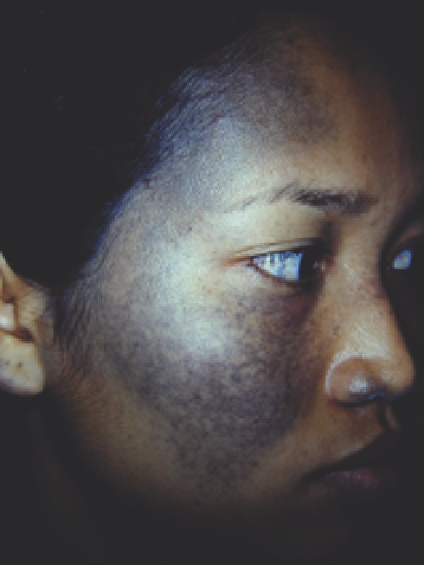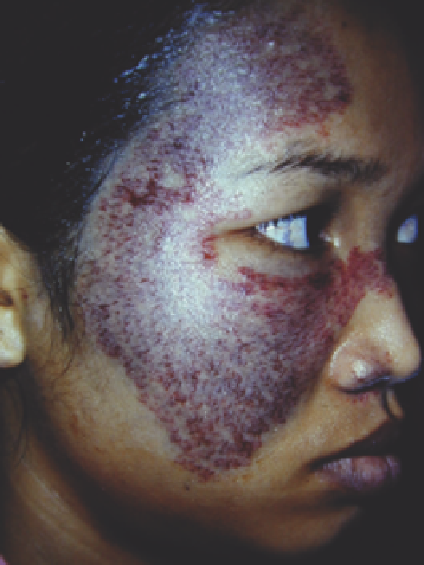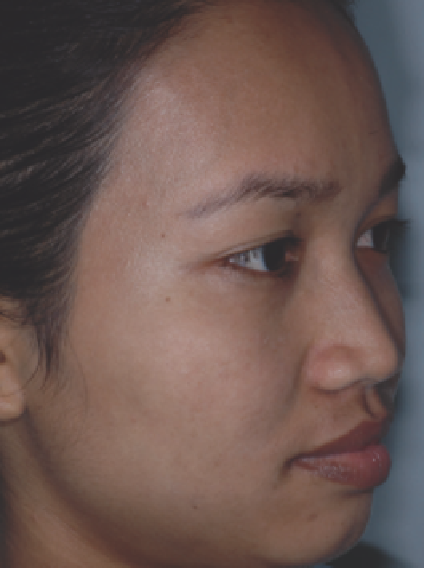Biomedical Engineering Reference
In-Depth Information
(
A
)
(
B
)
(
C
)
(
D
)
Figure 13.14
(
A
) A 22-year-old Thai girl with a nevus of Ota, before treatment. (
B
) Pinpoint bleeding was demonstrated after disappearance of the immediate
whitening of the pigmented lesion following a 1064-nm Q-switched neodymium-doped:yttrium-aluminum-garnet laser treatment using a fl uence of 7 J/cm
2
through a 4-mm spot size. (
C
) One month after the fi rst treatment. (
D
) Two months after the seventh treatment.
Source
: From Ref. 283.
A total treatment of two to fi ve sessions is usually required for
complete clearance of the lesions. The treatment interval is
controversial. Some groups (125,127) retreat the patients as
soon as the wounds have healed, usually within 2-4 weeks. The
rationale for early retreatment is to treat prior and prevent
epithelial repigmentation so that more laser energy can reach
the dermal target. However, a greater rate of complications,
especially persistent hypopigmentation, can occur. Polnikorn
et al. (129) and our group (126) usually retreat the patients
every 8-12 weeks, depending on the clearance of PIH. In fact,
we noted the benefi t of delayed treatment as signifi cant light-
ening can sometimes be seen many months after the initial
treatment session. Ee et al. (131) also noted continuous light-
ening of the residual pigmentation over a period of 6 months

























